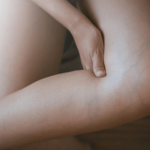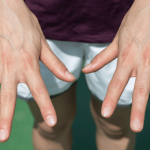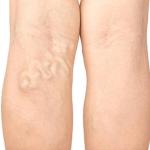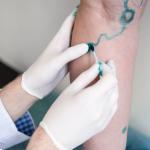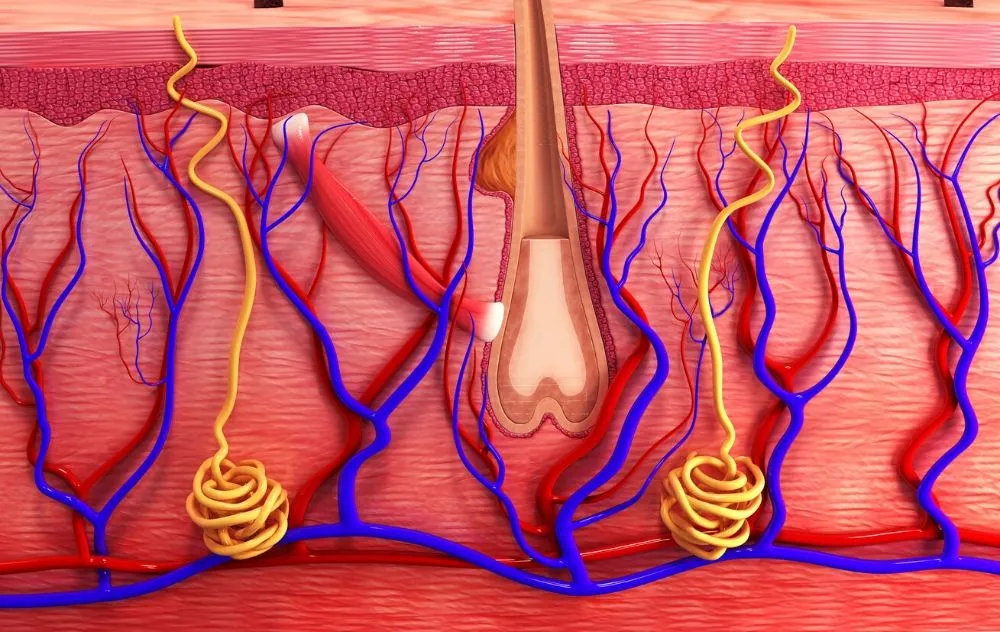
Your skin is your body’s largest organ, covering a total area of about 15 to 25 square feet. Its job is to protect your body from microbes (viruses and bacteria), help regulate your overall body temperature, and give you the ability to experience sensations such as heat or cold, rough or soft, etc.
The main barrier between you and the outside world is your skin. Even though your skin may seem thin and delicate, it’s full of nerve endings and made to be tough yet stretchy, so it can protect your body..
Your skin is a reflection of your overall health, and your veins play a crucial role in keeping it looking its best. If you begin to notice web-like blue or green veins or protruding veins on the skin of your legs, they might indicate the development of vein disease. A vein specialist can conduct screenings to evaluate and check if this might be a sign of varicose or spider veins
What are the different layers of skin?
Your skin, similar to an onion, is comprised of various layers. The top three layers of skin are:
- The epidermis
- The dermis
- The subcutaneous fat
These layers are crucial for different aspects of your body’s systems. As we mentioned above, protection and temperature regulation are two major functions of the skin; however, each layer is in charge of many additional duties.
Epidermis
The epidermis layer of the skin is in charge of three vital activities: making new skin cells, protecting your body from viruses and bacteria, and giving your skin color (melanin). This top layer of the skin varies from thin to thick depending on where it is located in your body. In addition, the epidermis acts as a waterproof barrier. To reiterate the epidermis skin layer’s main jobs:
Dead cells are shed continuously from the epidermis layer as new ones take their place. Making new skin cells is important in the healing process to make way for healthy skin cells when you get injured or develop any skin condition.. This process takes between two weeks to a month from the time cells are created at the bottom layer of the epidermis, to when they rise to the skin’s surface and die.
Dermis
This layer resides just below the epidermis. The dermis contains connective tissue, sweat glands, blood vessels, and hair follicles.
- Sweat glands – The dermis’ main job is to create sweat glands that travel through your pores.
- Nerve endings – The nerve endings that reside in the dermis layer send signals to your brain if something you touch hurts, itches, burns, or feels pleasant.
- Blood vessels – Blood vessels expel skin waste from the dermis layer.
- Oil retention – Just like sweat glands, the dermis layer produces oil glands that help keep your skin waterproof and flexible.
- Follicles – The root of each hair on your body starts at a follicle within the dermis layer. This is where the hair grows, as well as tightens when you are cold or scared.
Your dermis layer is full of tiny blood vessels that keep your skin cells healthy by bringing them the oxygen and nutrients they need. In addition, they also have the job of taking away any waste.
Subcutaneous Fat
The final, bottom of the layers of your skin is known as the subcutaneous fat layer. This layer’s job is:
- Attachment – The subcutaneous fat layer attaches the dermis layer to your muscles and bones.
- Networking – Your blood vessels such as your superficial veins as well as nerve cells start at the dermis layer and network through your body getting large within the subcutaneous fat layer.
- Storage – Fat is stored within this layer to protect your bones, muscles, and organs from physical injury.
- Thermostat – The subcutaneous fat layer assists your body in regulating its temperature so you don’t get too cold or too hot.
Oil storage within the subcutaneous fat layer feeds the hair follicles oils, which acts as a waterproofing. When it comes to regulating your temperature, your blood vessels, hair, and sweat glands cooperate to keep your skin and organs comfortable.
Where are your veins located?
Small blood vessels start within the dermis layer of your skin and travel lower throughout your body. These also connect to larger superficial veins underneath the skin and then deep veins located within the muscles. The blood vessels remove skin cell waste and bring the vitamin D produced within the epidermis layer back toward the other organs. These vessels also branch out to feed the veins and arteries.
Superficial veins right beneath can become damaged if the vein valves cease to circulate blood properly resulting in varicose or spider veins and even venous ulcers. Deep veins can also become damaged and cause harmful conditions such as blood clots.
Healthy Skin Means Healthy Veins
For Healthy Skin Month, we are highlighting how important it is to treat underlying vein disease. If your blood is not circulating properly and is allowed to pool within the veins, your skin can become harmed. Left untreated over time, vein disease can result in skin discoloration, bulging varicose veins, leg pain or swelling, restlessness, venous ulcers, or even blood clots. These symptoms can cause immense pain or discomfort as the disease progresses.
Take Our Vein Symptom Quiz
If your skin is cracked, dry, itchy, or hardened, these can all be signs of an underlying issue. You may start seeing or feeling the effects when your legs do not receive the proper nutrients and oxygen due to restricted blood flow.
At USA Vein Clinics, our vein doctors understand that your skin’s health is deeply connected to the health of your veins. Getting venous insufficiency diagnosed and treated early, can help prevent skin issues like discoloration, swelling, and ulcers. Our personalized treatment plans are designed to keep your veins strong and your skin looking its best.
Explore our website to learn more about underlying vein disease and discover how vein treatment can help improve circulation and skin health.
Don’t wait for your symptoms to worsen, give us a call at 888.768.3467 or schedule an appointment by clicking the button below.
#HealthySkinMonth #VeinDiseaseAwareness
Related Articles
What’s the Difference Between Superficial and Deep Veins?
How Can Venous Insufficiency Cause Skin Damage?

